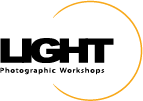Written by Hal and Embellished by Victoria
I have received a few inquiries about how Hal and I set up our cameras and our gear before we go out on a shoot. Hal, being the thorough instructor that he is, has created checklists for this very thing. We usually hand these checklists to our "Basics of your DSLR" workshop attendees. In this class Hal teaches, in detail, his methods and recommendations for camera set-up as they go through the checklist. Since you don't have his in-person charm to explain his points, I went through them and added a few embellishments.
So here is his simple check-list (the first of 3 parts) as good starting points for you to set up your camera before going out to shoot.
In your camera setting menus
1. Set Image Quality
Picture
Style for JPEG? All cameras give you “JPEG preview” for your LCD. We recommend the
Neutral setting which gives you the closest “look” to your RAW image.
2. "Shoot without card" Option
Turn
this Off! That way you don’t realize 100 shots in that none of your images have
been recorded because you didn’t put a card in your camera…This has never happened
to us, of course.
3. Color Space
Adobe
is preferred: Adobe 1998 etc. Give yourself the largest color space possible to
start out with. That way you have the choice of minimizing color space later on
if needed.
4. Highlight Alert
Enable
(remember to check your histogram also!) This is a friendly reminder from your
camera that you have over exposed your highlights. It says you are “void” of
pixel information where the “blinkies” occur.
5. Auto rotate
On- Save yourself some time in the post process!
6. File numbering
Continuous- If you aren't renaming your files when importing, this will keep from having duplicate numbers- which could create confusion or overwriting your files in your folder.
7. Set Correct Date
and Time
Ultimately,
you will be using this for your import process, key wording, searching for
images. For wedding and event photographers that use a second shooter or camera,
this REALLY helps when combining second shooter/camera images into your catalog
or “time-sorted” folders.
8. Program back button focus only
AF-On: Opposed to shutter button focusing.
AF-On
or the “Back-button” (*) focus is what we recommend to all who use auto-focus.

